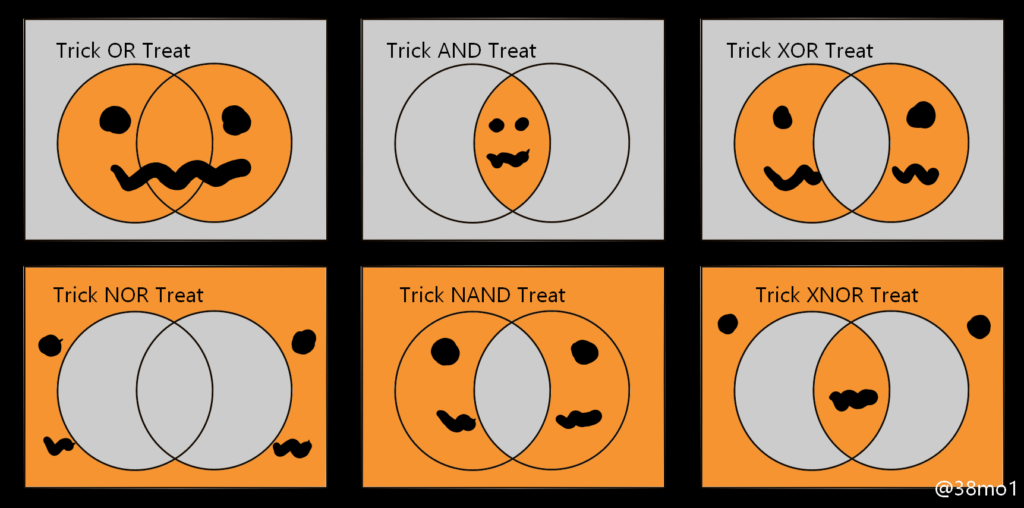We know Hallowe’en was last week, but saw this on Twitter and it’s too good not to share! If you’ve ever wondered what library staff (and mathematicians and engineers and many other professions) talk about when they mention Boolean operators or logic gates, this handy infographic from @38mo1 may help!

Traditionally search engines and databases used Boolean operators along with keywords to help you search more constructively. Some (like Google) now accept natural language searching, but many academic or technical databases still require you to search in this format.
For example, if you search on DiscoverEd:
- “Property Law” OR Servitudes: 70,745 results.
- “Property Law” NOT Servitudes: 57,500 results.
- “Property Law” AND Servitudes: 154 results.
Those little connecting words can make all the difference!
For more help with searching, watch this short video (9 minutes) about Search Techniques on our Law Librarian Media Hopper Channel. Unfortunately pumpkins not included.
